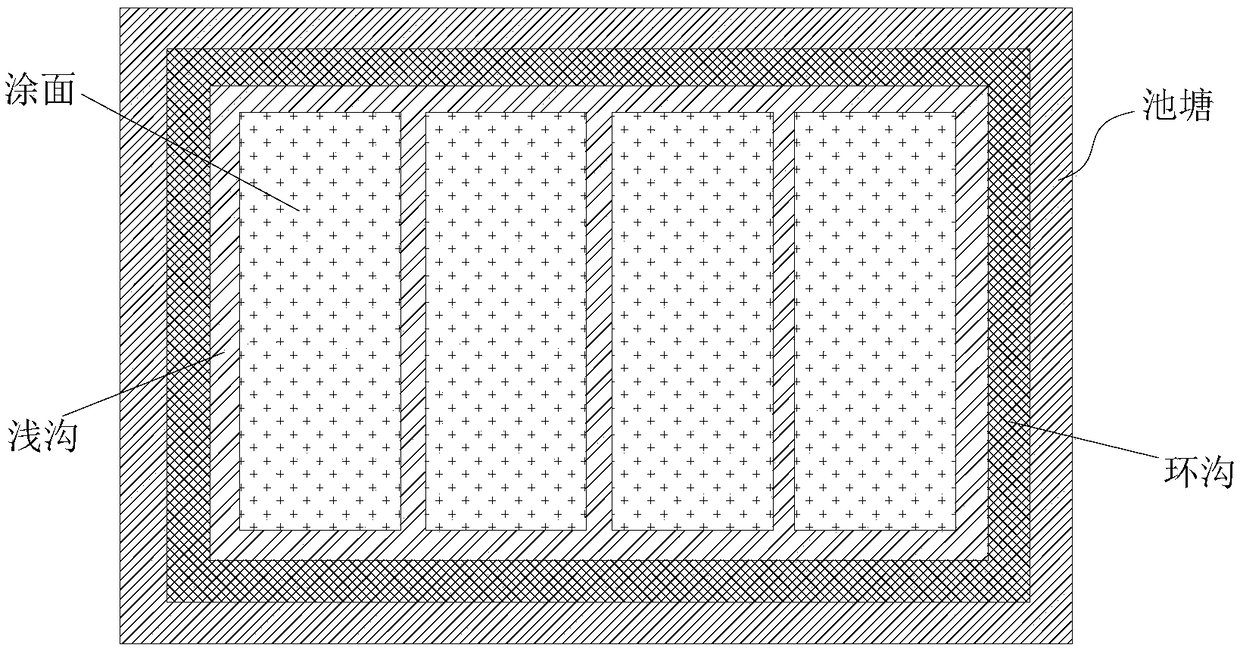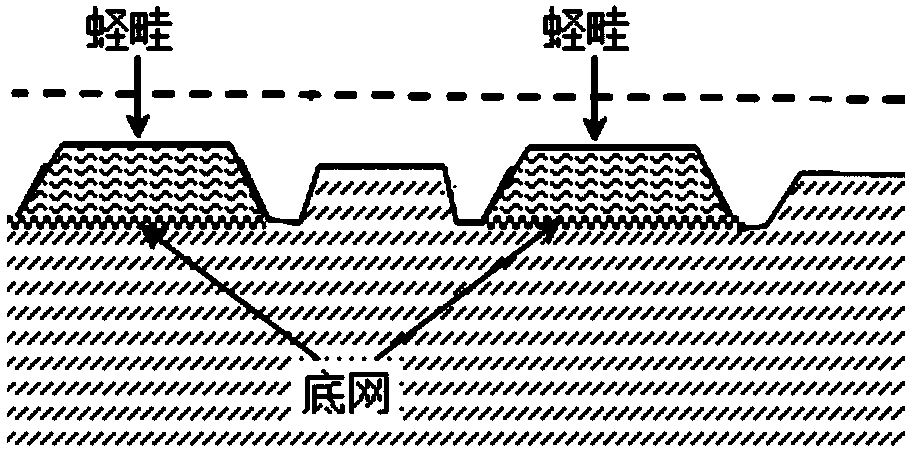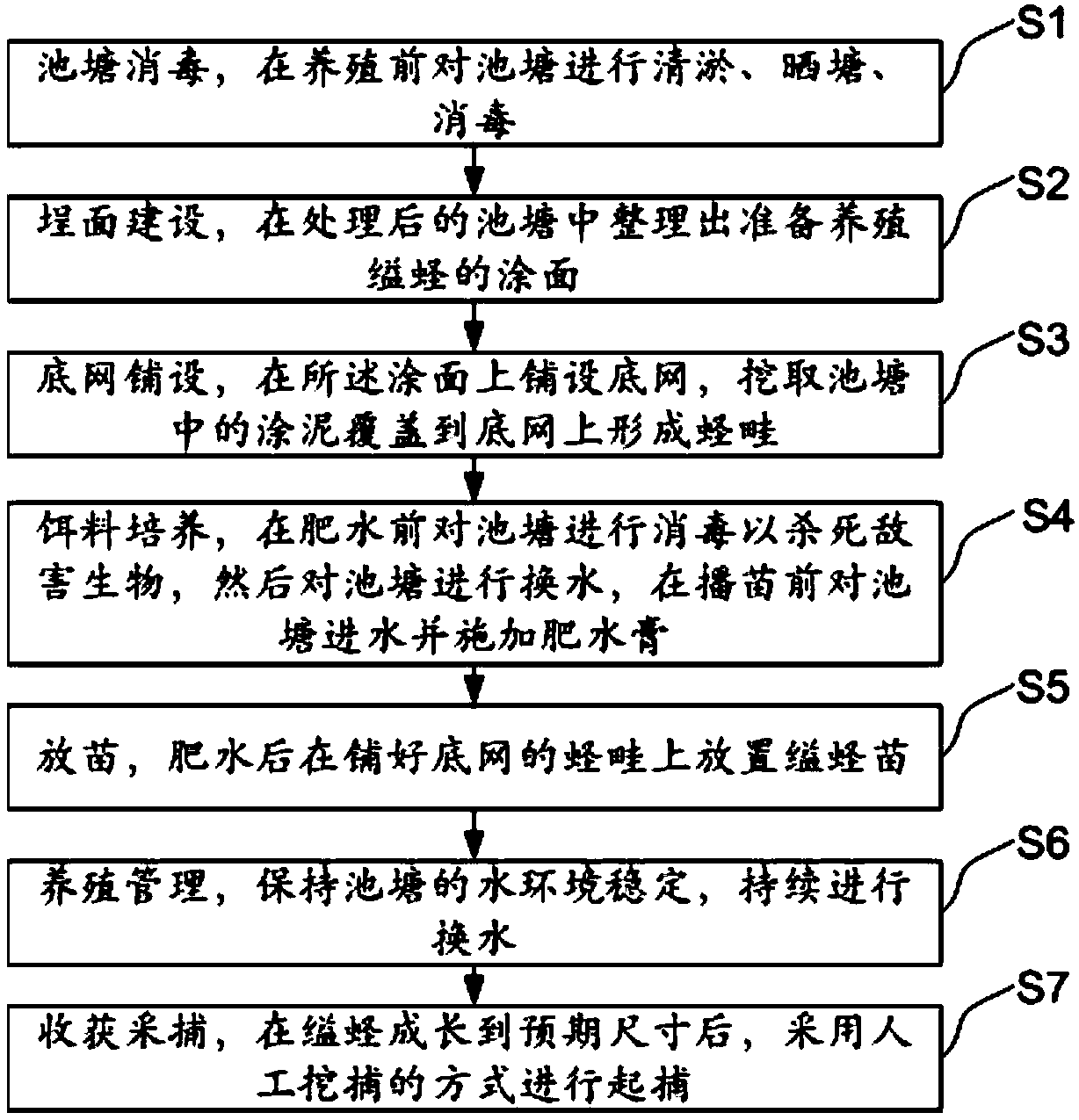Bottom netting laid culture method for sinonovacula constricta
A breeding method and technology of razor clams, which are applied in the field of razor razor bottom net culture, can solve the problems that mechanical harvesting cannot be realized, and the cost of manual catching of razor clams is increased, so as to reduce labor costs for catching razor clams, improve benefits, and improve harvesting efficiency Effect
- Summary
- Abstract
- Description
- Claims
- Application Information
AI Technical Summary
Problems solved by technology
Method used
Image
Examples
Embodiment Construction
[0024] The present invention will be further described below in conjunction with the accompanying drawings and specific embodiments.
[0025] see figure 1 , figure 2 and image 3 As shown, the present invention provides a method for cultivating razor clams with nets at the bottom, comprising the following steps: S1: disinfection of the pond, dredging, drying the pond, and disinfecting the pond before culturing;
[0026] Among them, step S1 specifically includes: planning and setting the pond area to be 15 mu to 30 mu, draining the pond water, removing the sludge and impurities at the bottom of the pond, spreading 100kg / mu to 120kg / mu of quicklime evenly in the pond, and plowing The pond makes the soil loose after frost and sun exposure, and the plowing depth is generally 0.2-0.3m.
[0027] S2: Chengmian construction, in the pond after treatment, sort out the coated surface for cultivating razor clams;
[0028] Among them, such as figure 1 As shown, water inlets and drain...
PUM
| Property | Measurement | Unit |
|---|---|---|
| Width | aaaaa | aaaaa |
| Thickness | aaaaa | aaaaa |
Abstract
Description
Claims
Application Information
 Login to View More
Login to View More - R&D
- Intellectual Property
- Life Sciences
- Materials
- Tech Scout
- Unparalleled Data Quality
- Higher Quality Content
- 60% Fewer Hallucinations
Browse by: Latest US Patents, China's latest patents, Technical Efficacy Thesaurus, Application Domain, Technology Topic, Popular Technical Reports.
© 2025 PatSnap. All rights reserved.Legal|Privacy policy|Modern Slavery Act Transparency Statement|Sitemap|About US| Contact US: help@patsnap.com



